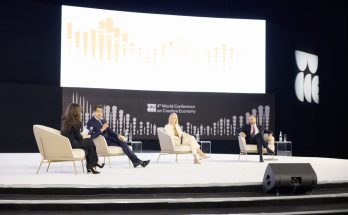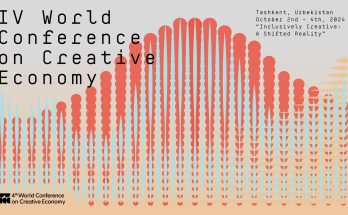 They are the bridge-builder between the world’s two largest democracies. The 3.2 million-strong Indian-American community has become a model immigrant community, enriching America with their skills, expertise and enterprise. And the stellar role they have played in transforming India-US relations has been generously acknowledged by the leaders of both countries.
They are the bridge-builder between the world’s two largest democracies. The 3.2 million-strong Indian-American community has become a model immigrant community, enriching America with their skills, expertise and enterprise. And the stellar role they have played in transforming India-US relations has been generously acknowledged by the leaders of both countries.
Indian Americans are now the third largest immigrant community in America; their population having grown by over 150 times in the past five decades since the US relaxed immigration regulations for Asians.
They have made a place for themselves in almost all walks of life in America, from the professions, academia, media, social activism and trade unionism, fashion designing to Hollywood as actors, film makers and producers. They made a name for themselves in the US when they became the mainstay of the Silicon Valley hi-tech boom. Indians have been social activists, trade union leaders and even revolutionaries – the Gadar movement that planned to liberate India from imperialism had its birth in California just about a hundred years ago.
The earliest Indians to reach America were slaves, servants and seamen brought on the ships plying the East India trade, followed by a handful of merchants. But the real immigration began when groups of Sikhs arrived in the US to find work on farms and lumber mills towards the beginning of the 20th century. But it is the last two decades that has seen a large influx of Indians in America that doubled the Indian American population to reach just over 3 million.
As they have grown in numbers and influence, Indian Americans have moved into new areas. Through the second half of the 20th century, the main focus of most Indian Americans was their professional and home lives. From the traditional choices of medicine, engineering and management, they have been making their presence felt in other spheres such as media, politics and the legal profession.
 Indians were slow to enter politics since the main focus of the new immigrants was on their professional and business interests. It is in the last decade that Indian Americans have ventured into politics; beginning from city council politics to state level and then to the US Congress, though the first Asian to enter the US Congress was Dalip Singh Saund from California in 1956 who spent six years in the House of Representatives. There are now two Governors of Indian origin, Bobby Jindal in Louisiana and Nikki Haley in South Carolina plus a handful of state representatives.
Indians were slow to enter politics since the main focus of the new immigrants was on their professional and business interests. It is in the last decade that Indian Americans have ventured into politics; beginning from city council politics to state level and then to the US Congress, though the first Asian to enter the US Congress was Dalip Singh Saund from California in 1956 who spent six years in the House of Representatives. There are now two Governors of Indian origin, Bobby Jindal in Louisiana and Nikki Haley in South Carolina plus a handful of state representatives.
Indians’ initial foray in the political arena was through contributions to the election campaigns of some selected candidates. It was the complete isolation imposed on India by the US after India’s nuclear tests in 1998 that led to several prominent Indian Americans using their influence to present the Indian point of view to American officials and Congressmen. Indian Americans became an effective lobbying force during the negotiations for the Indo-US civilian nuclear energy cooperation agreement – a fact that has been gratefully acknowledged by Prime Minister Manmohan Singh.
 Among the first Indian Americans to get appointed to a senior administrative position in the US was Joy Cherian in the Reagan Administration. President Barack Obama, who had several Indians working in his campaign, appointed a record number of Indian Americans in his administration. During his second term Indian Americans have acquired an even higher profile in Washington. President Obama has nominated three Indian Americans for judicial appointment, from Sri Srinivasan to the Court of Appeals, Vince Girdhari Chhabria to the North California district court and Manish Shah for the district court of Northern district of Illinois. Raj Shah was appointed Administrator of USAID, the highest ranking position attained by an Indian American, Vinai Thummalapally was the first Indian American to become an Ambassador to Belize and Neal Katyal was acting Solicitor General.
Among the first Indian Americans to get appointed to a senior administrative position in the US was Joy Cherian in the Reagan Administration. President Barack Obama, who had several Indians working in his campaign, appointed a record number of Indian Americans in his administration. During his second term Indian Americans have acquired an even higher profile in Washington. President Obama has nominated three Indian Americans for judicial appointment, from Sri Srinivasan to the Court of Appeals, Vince Girdhari Chhabria to the North California district court and Manish Shah for the district court of Northern district of Illinois. Raj Shah was appointed Administrator of USAID, the highest ranking position attained by an Indian American, Vinai Thummalapally was the first Indian American to become an Ambassador to Belize and Neal Katyal was acting Solicitor General.
 Indians have made a success in other non-traditional areas like the competitive entertainment industry as well with Ashok Amritraj as a successful producer in Hollywood, M. Night Shyamalan as a director and Padma Lakshmi as a model and television host. Young Indians have cornered the American spelling bee contests for several years. Indians have been participating in sports ever since Alexi Grewal won a gold medal for cycling in the 1984 Summer Olympics.
Indians have made a success in other non-traditional areas like the competitive entertainment industry as well with Ashok Amritraj as a successful producer in Hollywood, M. Night Shyamalan as a director and Padma Lakshmi as a model and television host. Young Indians have cornered the American spelling bee contests for several years. Indians have been participating in sports ever since Alexi Grewal won a gold medal for cycling in the 1984 Summer Olympics.
Lauded as a ‘model minority’ because of the high numbers of doctors, engineers, IT professionals and entrepreneurs and their ability to assimilate in the American dream, there still exists some ambivalence and unfamiliarity about Indian Americans in the US. As Nina Davuluri was crowned Miss America, she evoked a hail of emails and tweets calling her an Arab and a terrorist. In 1994 Ratna Kancherla became Miss Teen America without evoking similar outrage, probably because the social media, which allows every one to have their say, especially the angry and disgruntled, had not made its appearance.
On a more serious note are the hate crimes and violence against Sikhs. The attack on a Sikh professor in Harlem by a group of men who called him “Osama” was the most recent of such crimes. It was preceded by the shooting at the gurdwara in Oak Creek in Wisconsin in August 2012, where a neo-Nazi gunman killed six Sikhs. There have been other violent attacks on Indians, especially Sikhs, but these are relatively isolated incidents compared to the size of the Indian community.
About three per cent of engineers in the US are Indian American as are eight per cent of its physicians and surgeons and seven per cent of IT workers in the country. But this is not the sole picture of Indian Americans in the United States. Not all Indian Americans are affluent and well educated; there are them who struggle to make a living. A large number of Indians drive taxis in New York, man the 7-Eleven stores, work on farms in California and run motels across the country. According to a recent study, Indians constitute about two per cent of illegal migrants in the US.
The US, however continues to attract young Indians; more than a third of foreign born Indians in the US arrived there since 2000. Indians also form the second highest group of international students studying at American institutions. As India and the US navigate their relationship through the shifting international landscape in the next few decades, the leaders of the two countries can count on Indian Americans to provide the much-needed popular support to what President Obama has eloquently described as the defining partnership of the 21st century.
(Shubha Singh is a senior Indian journalist and the author of Overseas Indians: The Global Family)
Author Profile
Latest entries
 DiasporaOctober 27, 2014Why PM Modi’s voyage to Fiji matters
DiasporaOctober 27, 2014Why PM Modi’s voyage to Fiji matters CultureMarch 28, 2014Remembering the spirit of Ghadar revolution
CultureMarch 28, 2014Remembering the spirit of Ghadar revolution CultureSeptember 27, 2013Indian Americans: A Winning Journey
CultureSeptember 27, 2013Indian Americans: A Winning Journey CultureSeptember 23, 2013A passage to India: From Guadeloupe, with memories and longing
CultureSeptember 23, 2013A passage to India: From Guadeloupe, with memories and longing







